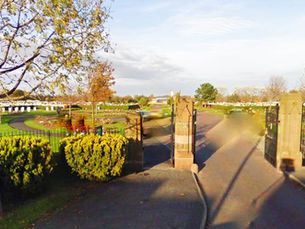Bowlers Riding School in Formby set up a tribute to the 2 and 4 legged heroes of WW1
- Formby Bubble

- Nov 9, 2018
- 2 min read

Horses were heavily used in World War One. Such was the use of horses on the Western Front, that over 8 million died on all sides fighting in the war. Two and a half million horses were treated in veterinary hospitals with about two million being sufficiently cured that they could return to duty. Bowlers Riding School in Formby have set up a tribute to the 2 and 4 legged heroes of WW1. Their message says: ❤️ Lest We Forget 💜 Our tribute to the 2 and 4 legged heros of WW1 Horses were involved in the war’s first military conflict involving Great Britain – a cavalry attack near Mons in August 1914. Horses were primarily to be used as a form of transport during the war. When the war broke out in Western Europe in August 1914, both Britain and Germany had a cavalry force that each numbered about 100,000 men. Such a number of men would have needed a significant number of horses but probably all senior military personnel at this time believed in the supremacy of the cavalry attack. In August 1914, no-one could have contemplated the horrors of trench warfare – hence why the cavalry regiments reigned supreme. In fact, in Great Britain the cavalry regiments would have been seen as the senior regiments in the British Army, along with the Guards regiments, and very many senior army positions were held by cavalry officers. However, the cavalry charge seen near Mons was practically the last seen in the war. Trench warfare made such charges not only impractical but impossible. A cavalry charge was essentially from a bygone military era and machine guns, trench complexes and barbed wire made such charges all but impossible. However, some cavalry charges did occur despite the obvious reasons as to why they should not. In March 1918, the British launched a cavalry charge at the Germans. By the Spring of 1918, the war had become more fluid but despite this, out of 150 horses used in the charge only 4 survived. The rest were cut down by German machine gun fire. However, though a cavalry charge was no longer a viable military tactic, horses were still invaluable as a way of transporting materials to the front. Military vehicles, as with any mechanised vehicles of the time, were relatively new inventions and prone to problems. Horses, along with mules, were reliable forms of transport and compared to a lorry needed little upkeep.






.jpg)




















.jpg)


Comments